I’m posting this from Fernando de Noronha, a small island off the North-East of Brazil where we are taking a few days break on the long passage home. A bit of catching up blog-wise on our time in St Helena which will have to wait until we get to Antigua.
You can see where we are by following the link: https://share.garmin.com/FT65C
Wednesday 22nd February to Tuesday 7th March
From Cape Town we had over 9,000 nautical miles, almost 3 months of actual sailing (excluding stops along the way) to get home to Bristol by mid June. We had wanted to visit Namibia after South Africa and to go on safari there, in fact it was to be one of the highlights of our trip back, but decided to drop this as we are pushed for time. There is so much of South Africa that we haven’t seen so we hope to return in a year or two (but not by boat this time) to spend a few more weeks there and in Namibia.
We want to be back in Bristol for the summer. We could have left Vega in Grenada in the Caribbean throughout the hurricane season there (June to November) but our insurance company will no longer cover us for named storms… weather patterns are changing in the world thanks to global warming, storms are more frequent and more severe, and insurance companies are more nervous. So we decided we’d have the briefest of stops in Antigua then head home across the North Atlantic via the Azores, the best time for these passages being late May and June.
There is a more direct and much shorter route to Europe sailing north past west Africa, with a possible stop at the Cabo Verde Islands, to the Azores then to the U.K. That way, saving around 2400 miles, would entail long passages motoring and slogging into the wind, not my idea of fun, whereas going with the trade winds to the Caribbean is much more comfortable sailing. So our planned route home is from Cape Town to St Helena, on to the island of Fernandes de Noronha (Brazil), then through the doldrums to Antigua in the Caribbean. At this point we will cross our outgoing path and will have completed our circumnavigation, so a time to celebrate! We will return back across the North Atlantic to the Azores then on to Bristol with perhaps a quick stop in Padstow for fish & chips.
I felt sad to be leaving South Africa but at the same time excited and ready to be moving on. Leaving the V&A at midday, with farewell hugs from sailing friends in the marina, we headed back through the bascule and swing bridges and out to sea. The weather was initially perfect as we crossed the bay, passing Robben Island, low and barren looking, where Nelson Mandela was incarcerated for so many years. We had a wonderful view of Table Mountain towering above the city and it was only around dusk as the light faded that it was finally lost to view.
The first five days at sea were difficult. Although the passage across the South Atlantic has the reputation as being one of the easiest of a circumnavigation and is described as being a ‘milk run’, Laura and Dick on Maia, a few weeks ahead of us, had warned it was more of a milk-shake run. As forecast we experienced strong winds and big seas which caused an uncomfortable, rough ride with the boat rolling from side to side, as well as making me quite fearful at times. We were both weary post-Covid, I still felt rather unwell and had a nasty cough keeping me awake at night.
On the second night at sea the boat rolled particularly violently, catching me off balance and I was flung across the cockpit, hitting the top of my head hard against the rigid arch that supports our sprayhood. Stunned, I felt miserable, exhausted and very sorry for myself. Apart a sore head, the headache, nausea and loss of balance I suffered after this was probably due to exhaustion, sea-sickness and a rolling boat rather than a serious head injury. It’s always a worry though, the risk of injury so far from medical help. If one of us did get seriously ill or injured on passage, sometimes many hundreds or even thousands of miles from the nearest land, we’d be well out of range of helicopter rescue. We’d just have to push on or hope that there was a nearby cargo ship which might be able to assist. After this incident we were particularly careful when moving around the boat.
Of course something has to break or go wrong on a passage and on day 4 our anemometer, which had been fixed yet again in Cape Town, started playing up and finally stopped working. I will say no more on this subject.
Another yacht EmilyLuna, also heading for St Helena, had left the V&A marina a couple of hours after us with Americans Keith and daughter Emily on board, who we’d only met briefly. They have a slightly longer and faster boat than us and we are rather conservative sailors preferring too little sail up than too much, especially at night. On the second day at sea we spotted them on the horizon behind, that night they gradually passed us and by the third night they were lost to sight ahead. We’d spoken on the VHF radio whilst they were in range and after that stayed in touch with them by satellite email.
As we had left Cape Town there were numerous large cargo ships and tankers at anchor and heading in and out of the port. As the days passed and we diverged from the main shipping routes they became fewer and we were glad for the presence of EmilyLuna ahead of us. The only other vessel we saw on AIS after day 4 at sea was a Chinese fishing boat, Xuxo Peniche, one of many hoovering up the ocean of its remaining fish stocks and causing hardship to small fishermen throughout the globe.
After the first five days conditions improved as we headed further northwest and beyond the stronger winds which blow from the southern oceans around the bottom of South Africa. It was getting warmer too as we headed into the tropics. The first nights at sea on watch in the cockpit I was in a long-sleeved top, thick fleece and sailing jacket, with thermal leggings, socks and warmly-lined waterproof trousers. As the miles progressed so the layers were discarded until it was just sailing top and shorts again. I love the tropics!
After the first week we didn’t see much other life either, no dolphins or whales, no sea birds so far from land, just the occasional shoal of flying fish skimming the waves, presumably escaping from some predator, and most mornings a few of their stiff, shrivelled corpses lay on our deck. Out at sea you become aware that you are just a tiny speck in the huge expanse of water, slowly creeping your way across the ocean.
Milk runs are those easy passages which most cruisers crave, going with the steady and gentle trade winds. Our route would be downwind to the top of Brazil but, like most boats, Vega won’t sail with the wind exactly behind her. She manages well if the wind is around 20 to 30 degrees over the transom but at this angle the mainsail will usually mask the genoa (the foresail). The solution is to pole out the foresail on the opposite side of the boat from the mainsail, to keep both sails taut and filled with wind. This is called wing on wing or goosewinged. On day 7 as the wind dropped we stirred ourselves from our usual languid state and got out the pole. Having not done much downwind sailing since the Pacific we were a little out of practice. We have a laminated diagram of how all the various lines (the uphaul, downhaul, guy and sheet) should go and an hour or so and a few expletives later it was erected and we could haul out the genoa and relax. We hope to get better at this before we reach Brazil.
As the days passed, with the sea becoming more gentle and the boat making slow but steady progress, we fell into a routine. Each morning we would check the latest weather forecast and run the LuckGrib app that gives us a suggested route. You’ll be glad to hear that we had Des along with us as well, supplementing our daily weather forecasts with his own words of wisdom. One of us could nap if tired, the other keeping watch. Chores, cleaning and boat maintenance fill part of the day, along with diary and blog writing, maybe a game of scrabble in the afternoon with tea and cake, and preparation of the evening meal to be eaten in the cockpit watching the sun set and listening to music from Hugh’s iPod (are we the only people still to have one and use it? No streaming of music out here). Hugh enjoys passage making. He loves feeling the miles pass, watching and adjusting the sails to optimise our speed, he thinks it’s a wonderful way to travel. I am just a little less enthusiastic!
Nights on watch can feel long. Our usual rota had been alternating 3 hours on watch and 3 hours in bed, but since I find it hard to get to sleep or to nap during the day Hugh would usually let me stay on in bed beyond my allotted time and catch up on sleep himself during the day. Despite this I was getting increasingly exhausted as the post-Covid cough had been keeping me awake (although thankfully this improved with a course of antibiotics). By the end of the passage we had decided that what worked best for us was Hugh getting four hours sleep after supper until past midnight and I could have the rest of the night in bed, in theory 7 hours of uninterrupted sleep. I envy Hugh’s ability to be asleep within minutes of his head hitting the pillow!
Meals are an important part of the day on passage and we ate well with a large stock of fresh fruit and vegetables on board and a freezer full of meals. I’d provisioned with enough non-perishables, tins and packets to last us to the Caribbean and possibly back to the U.K. and had had problems finding enough space to store it all. With so much food we didn’t put out the fishing line on this trip but will save this for when stocks are running low.
Initially a waxing crescent moon hung low in the sky after sunset, with Jupiter above and Venus below, but after they had sunk below the horizon an hour or two later, the night was very dark but with the sky ablaze with stars. The Milky Way is particularly stunning at sea with the Southern Cross, a guide for ancient mariners, easy to identify. As the days passed the moon set an hour later each night and by the time we reached St Helena it was a full moon, illuminating our path for most of the night.
On day 11 at sea we had a message from EmilyLuna. Water had suddenly started pouring into their boat through the stern tube. Fortunately they heard the water rushing in almost immediately and were quickly able to plug the tube with a wooden conical bung (which we and most cruisers carry for exactly this possibility). They soon diagnosed a fractured propshaft which had caused the broken shaft and propellor to drop down, allowing water into the boat and the propellor to knock against the rudder. Keith dived down and tied the propellor up and away from the rudder to prevent damage to it. They were ahead and to the northwest of us, so we diverted course to sail in their track in case they had any more problems. We waited anxiously all morning for further news and it was a relief to hear that they were ok. This finally prompted me to check through our grab-bag, one of the items on the never ending to-do list.
On our 14th day at sea we finally saw the distant silhouette of St Helena appear on the horizon. As we approached the island from the southeast the wind started to die, our speed dropping to under 3 knots. Only 20 miles away and with the prospect now of arriving in the dark, the engine went on and we motored hard for the next four hours. Nearing the island we could see its sheer, dark cliffs rising from the sea, craggy peaks shrouded in cloud, and a jagged coastline, waves crashing against the rock face.
St Helena appeared foreboding and impenetrable and it was only when we rounded the northeast end of the island that the capital Jamestown appeared, nestled in a long, barren valley that runs down to the waters edge, bare rocky slopes rising on either side, with fishing boats moored in James Bay.
Just beyond the town were mooring buoys for yachts, ten or so already tied up, one of them EmilyLuna who had managed to get a tow for the last few yards onto a buoy. As the light started to fade we gratefully tied our own lines to one of the large, yellow buoys and rather belatedly swapped the South African courtesy flag for the yellow Q (for quarantine) flag. The St Helena ferryman came by to check we were happy and Port Authority called on VHF radio to welcome us to St Helena and to advise they would be back in touch in the morning with check-in details. It was only as Hugh lifted the Duogen at the back of the boat where it had been towed, recharging our batteries on passage, that he discovered the arm of it was almost completely split through….
Hugh made a Spanish omelette for supper whilst I tidied up down below, we watched an episode of The Good Wife (a legal drama we are becoming addicted to), and slept long and soundly that night.
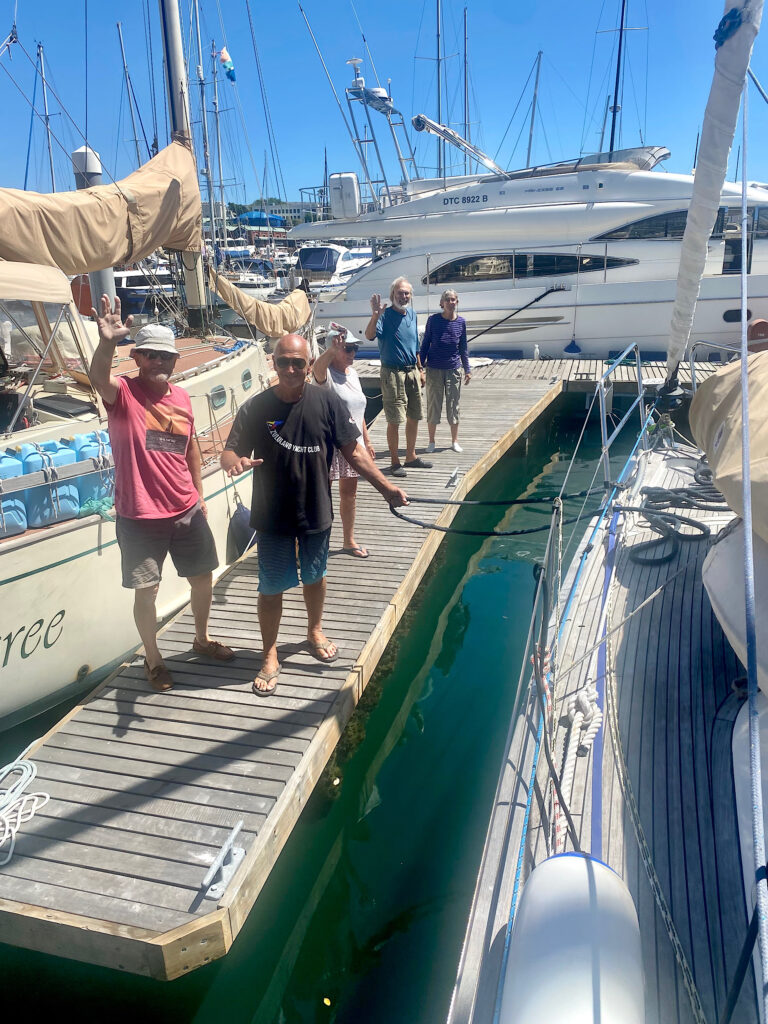
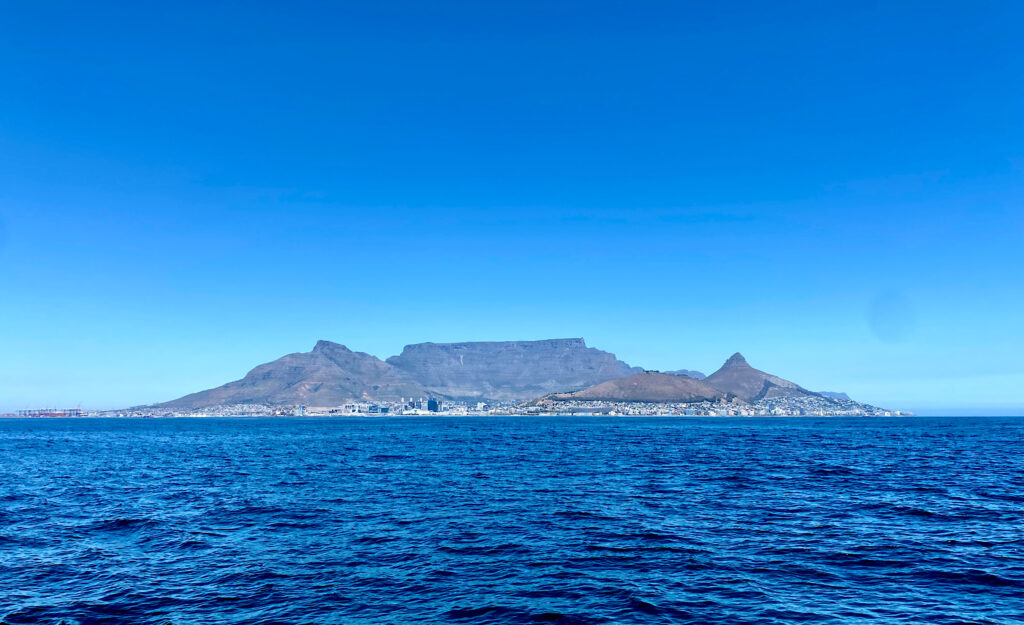
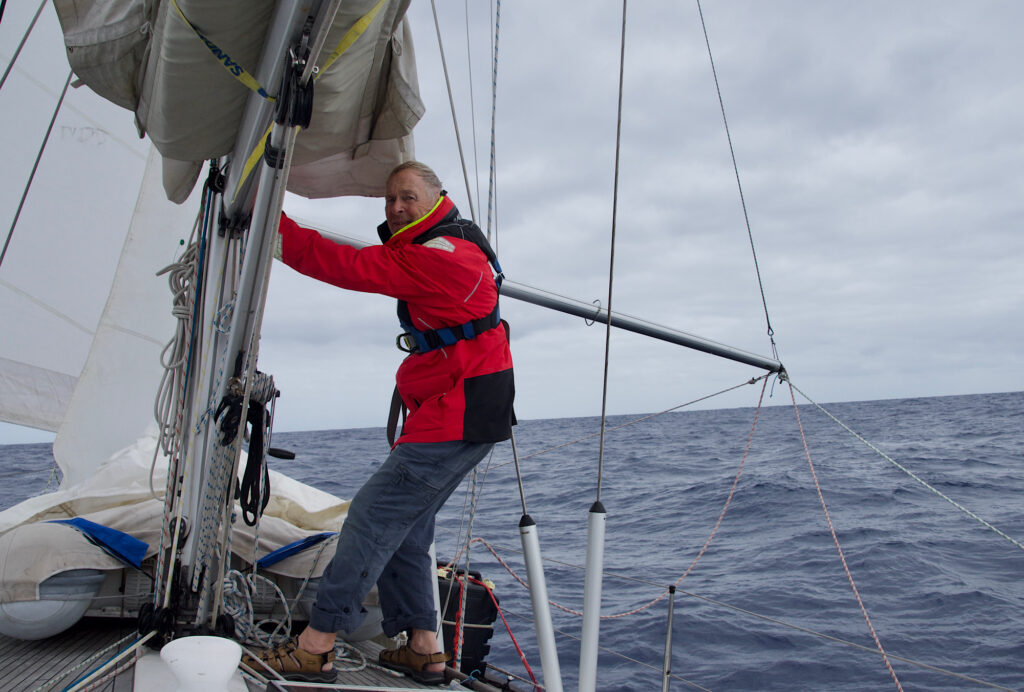
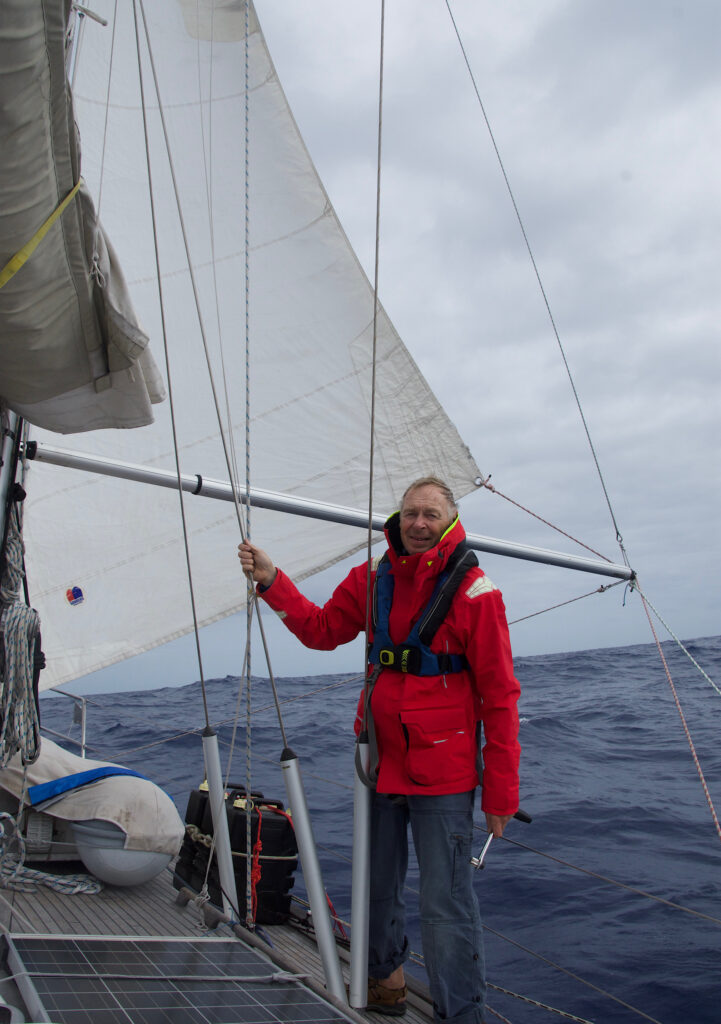
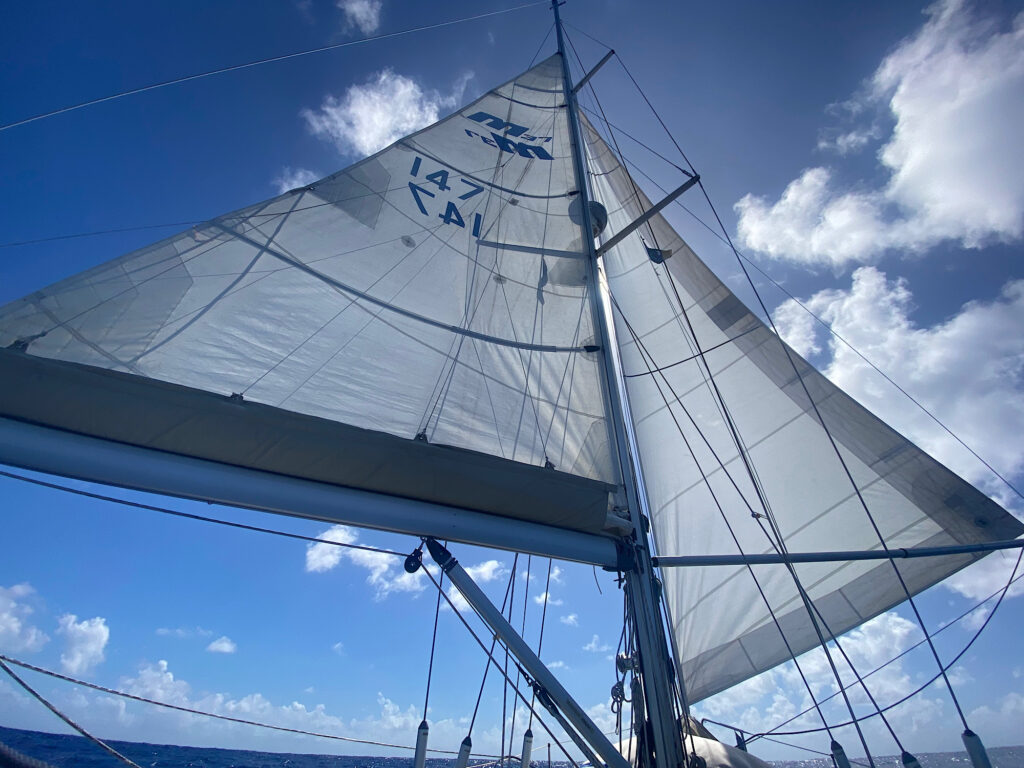
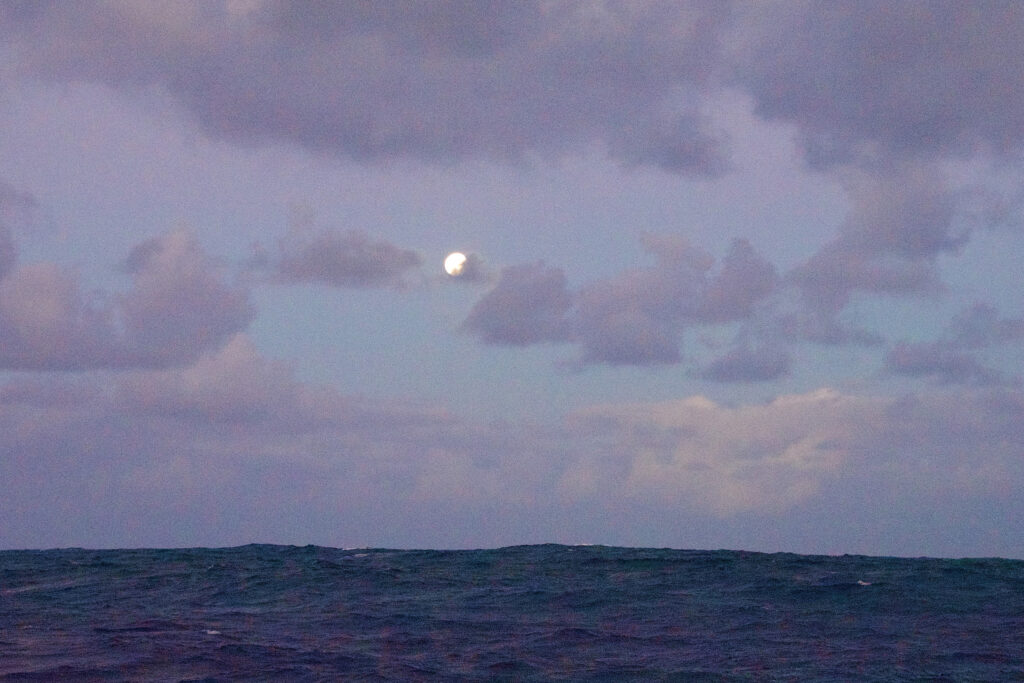
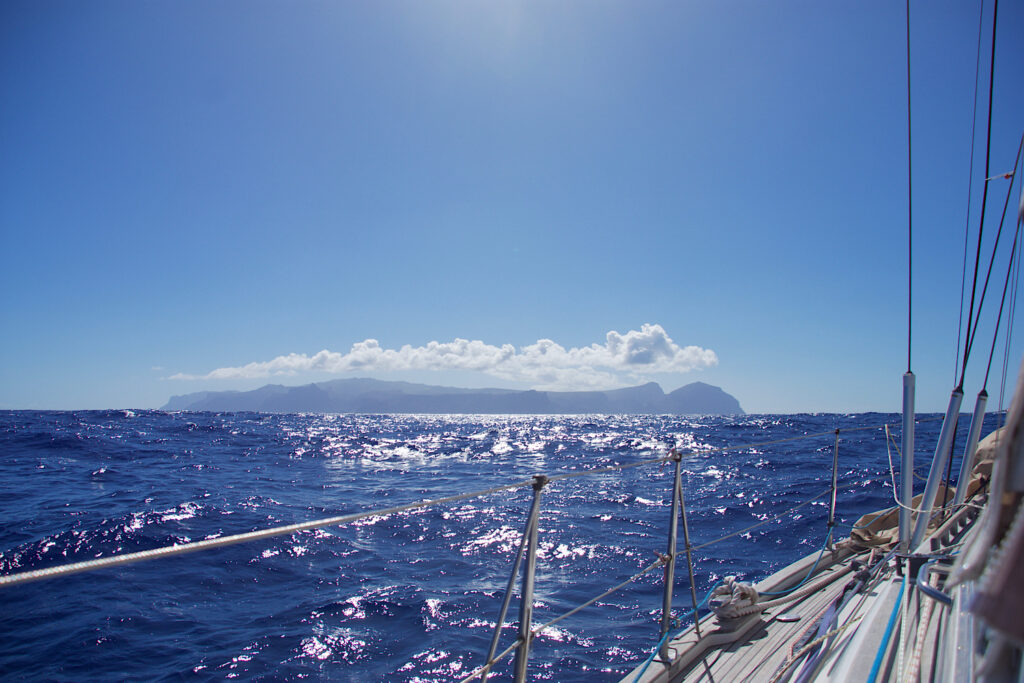
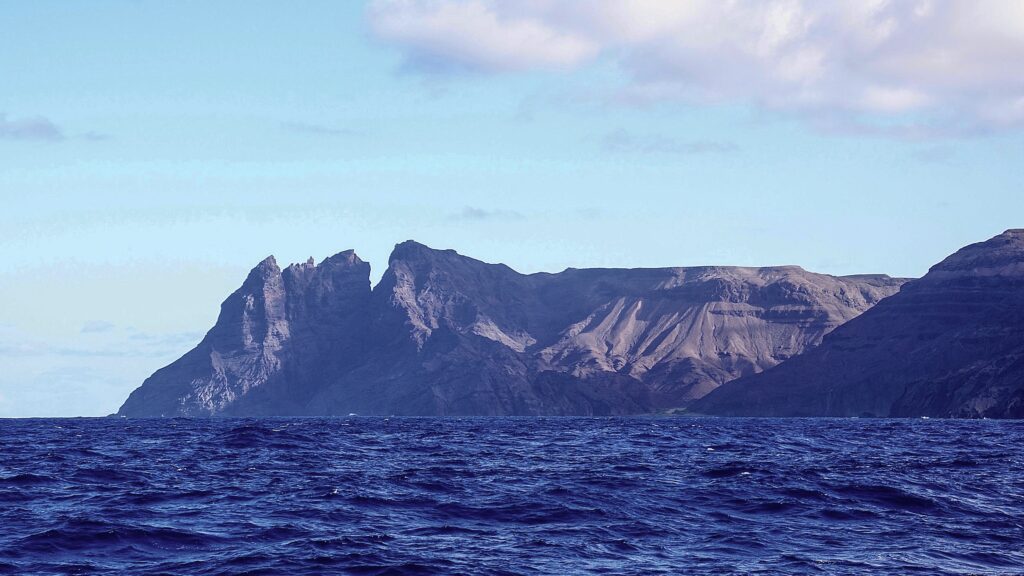
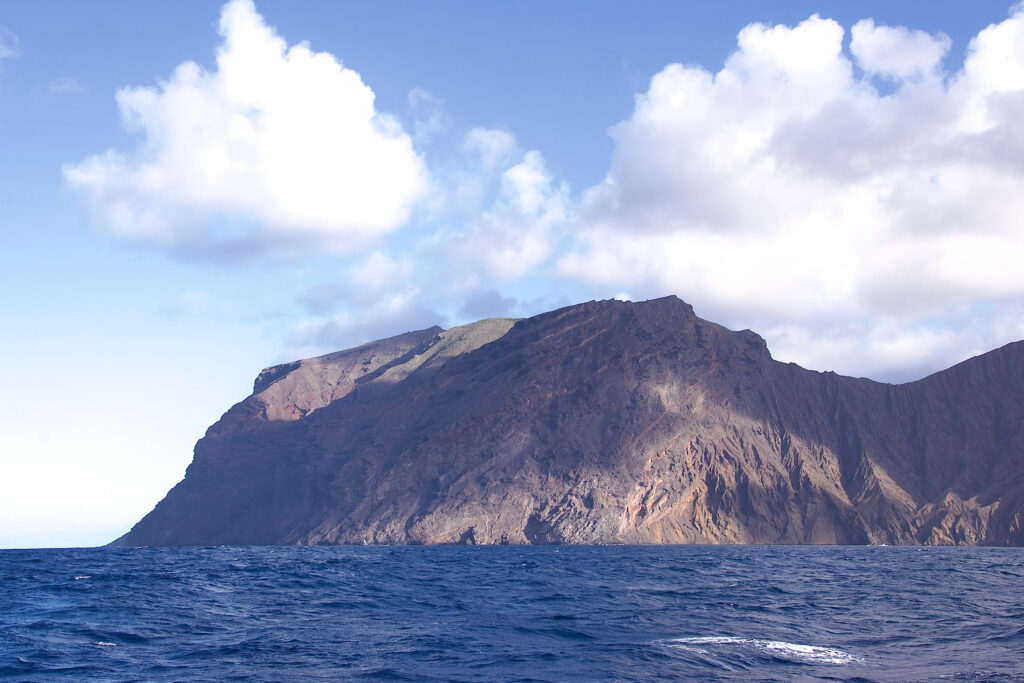
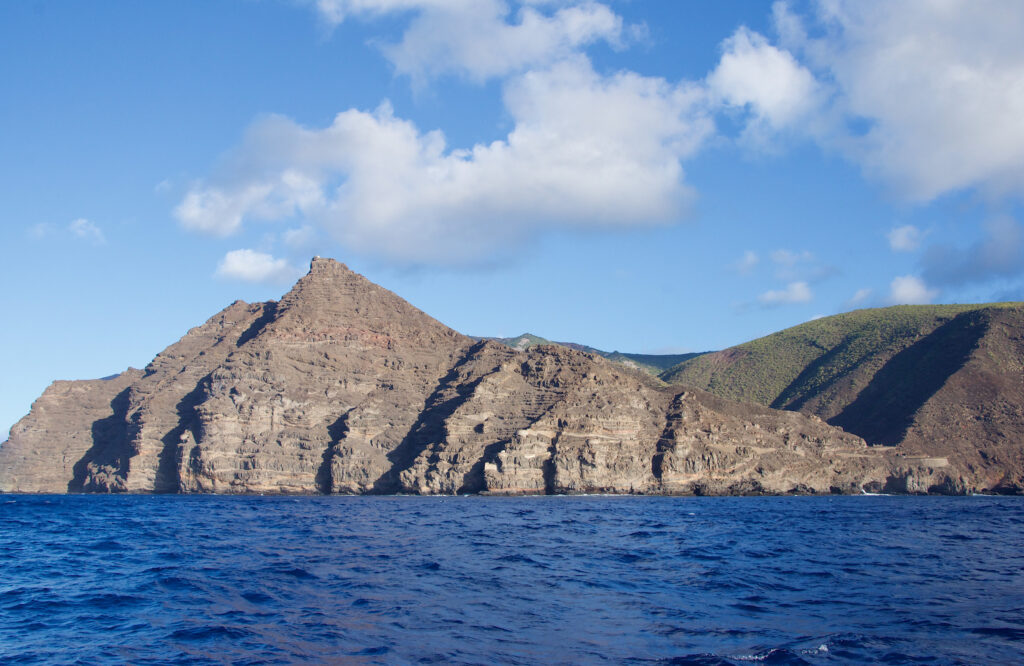
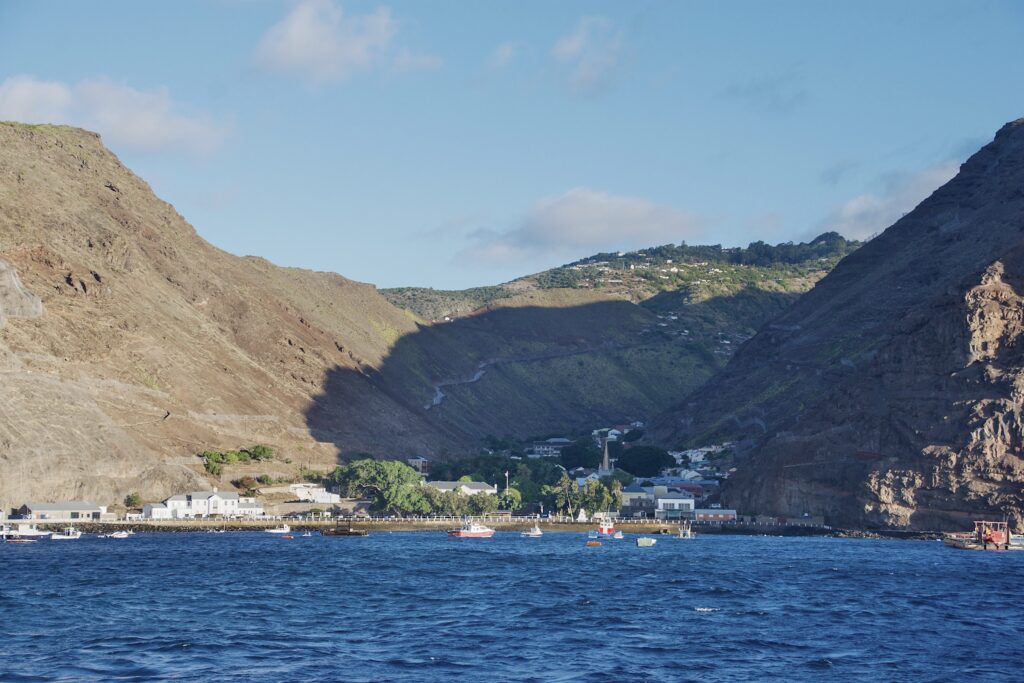
8 Comments
Annie
April 6, 2023 - 7:06 amA wonderful write up as ever.
annie
April 28, 2023 - 4:01 pmThanks Anniexx
Paul Bayley
April 6, 2023 - 8:43 amThe 14 days at sea would not suit me, glad you came through it ok, besides the knock on the head.
Not sure what you are going to do when you are on dry land in England for long periods.
Enjoy rest of the sailing.
Paul
annie
April 28, 2023 - 4:01 pmHi Paul, we have plans for the next phase of life. I think we’ll be busy! xx
Gerard
April 6, 2023 - 9:07 amAnother fascinating trip. Give my regards to Napoleon!!!!!!
annie
April 28, 2023 - 4:00 pmHi Gerard. Thank you. Sadly Boney left a while ago for Paris xx
Stephen Arnott
April 6, 2023 - 9:40 pmAnother great blog and awsome photos as well. Take care on the next leg-no more accidents please. I remember coming into Antigua with you both on the passage west from Cape Verde! Love Steve x
annie
April 28, 2023 - 3:59 pmThanks Steve. Yes, we remember the first Atlantic crossing with you too… great fun xx